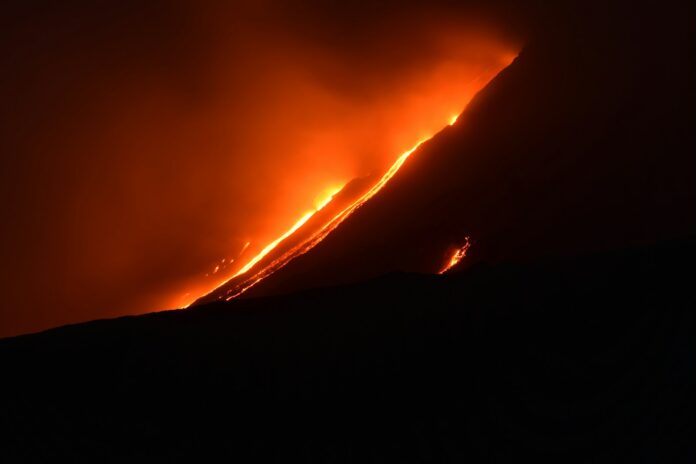On a sweltering Tuesday in July 2024, the residents of Catania, Sicily’s second-largest city, found themselves facing an unexpected adversary: a thick blanket of volcanic ash descending from the imposing Mount Etna. The ancient volcano, Europe’s tallest active peak, unleashed a powerful eruption that sent ash clouds soaring up to 8 kilometers into the sky, as reported by the National Institute of Geophysics and Volcanology.
The eruption, deemed one of the most intense in recent memory by the Etna Observatory in Catania, brought the bustling city to a standstill. Citizens and tourists alike were caught off guard, resorting to improvised measures such as using umbrellas and newspapers to shield themselves from the falling ash.
In response to the crisis, local authorities swiftly implemented emergency measures. Mayor Enrico Trantino issued a two-day ban on two-wheeled vehicles and imposed a 30 km/h speed limit for cars to ensure safety on ash-covered roads. Residents were tasked with collecting ash from their properties and placing it in designated containers for municipal collection, fostering a community-wide cleanup effort.
The impact of the eruption extended beyond the city streets to Catania’s international airport. Ash-covered runways forced a temporary suspension of all flights, with many canceled or diverted to other Sicilian airports. After intensive cleaning operations, the airport resumed services later that evening.
This recent eruption is not an isolated incident for Mount Etna. Similar events occurred earlier in the month on July 4th and 15th, underscoring the volcano’s persistent activity. Etna’s frequent eruptions have been documented since 425 BCE, making it one of the world’s most studied volcanoes.
Despite the challenges posed by living in the shadow of an active volcano, the areas surrounding Etna remain densely populated. The fertile volcanic soil supports thriving agriculture, creating a complex relationship between the mountain and its human neighbors. In recognition of its geological and cultural significance, UNESCO added Mount Etna to its World Heritage List in 2013.
